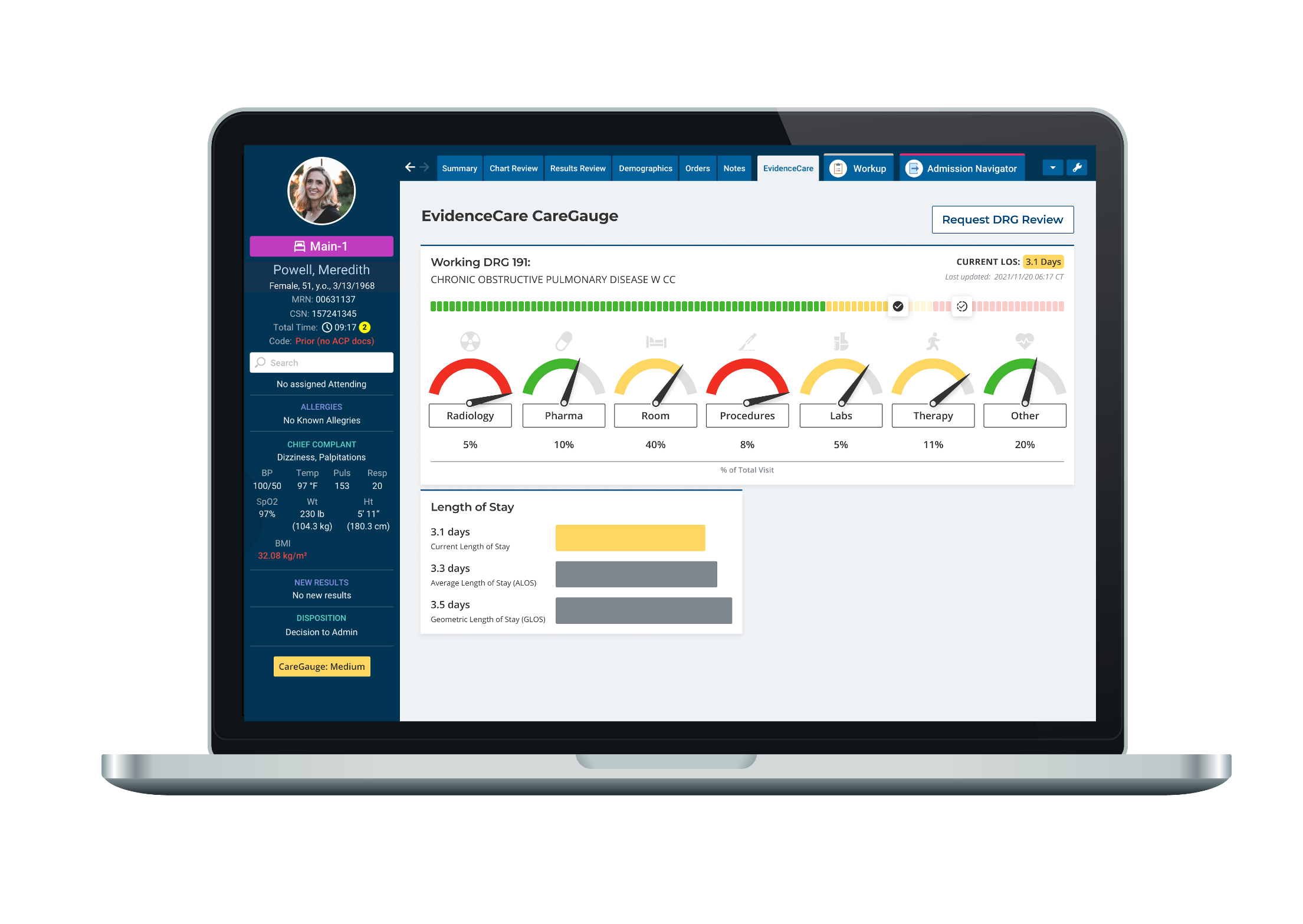Reduce Hospital Length Of Stay
Hospital length of stay is a critical metric system to measure the efficiency of hospital management. It’s an essential mechanism for improving the efficiency of care.
According to research evaluating the impact of reducing the length of stay in hospitals, it was discovered that length of stay reduction saved over 10,000 patient days for adult surgery and over 7,000 inpatient days for adult medicine in Syracuse hospitals in New York over a span of five years.
This hospital length of stay dataset suggests that the saved number of stay days was greatest for patients suffering major and severe illnesses.
The Importance of Reduced Length of Stay
In recent years, there has been an increased focus on the utilization of United States healthcare. This has emerged from the need to serve a complex healthcare population, manage the cost of care to address population needs, and make efforts to address clinical conditions, including coronavirus.
Because of the increased attention on healthcare length of stay, the need to improve hospital bed capacity has been closely monitored throughout the US.
Inpatient hospitals treat patients with the highest severity of illness through intensive care beds and medical surgery. These hospitals offer treatment through acute episodic care. In short, they treat patients on an inpatient basis and move them to post-discharge care, such as skilled nursing care, self-care, and home care.
While the ever-increasing cost of healthcare continues to draw the attention of both private and public sectors, different healthcare players focus on efforts to improve inpatient care and costs by focusing on ways to reduce hospital length of stay.
So, why is the length of stay important?
Reduction of LOS increases bed turnover and hospital throughput, allowing healthcare facilities to match demand with a bed capacity for intensive care units, elective surgeries, emergent admissions, and interhospital transfers. When demand surpasses capacity, it may lead to crowding and strained resources, linked to worse consequences, including mortality. Not to mention, the longer a patient is in the hospital, the more it costs the patient and hospital.
Average Length of Stay
The average length of stay (ALOS) refers to the number of days patients spend in a hospital. To calculate the ALOS, divide the total number of days spent in a hospital by all patients in a year by the number of discharges or admissions. Day admissions are excluded.
The ALOS data cover all inpatient cases in the US, including:
-
- Curative
- Acute care cases
- Diagnostic procedure
- Therapeutic procedures
- Surgical procedures
- Healthy babies born in a hospital
In 2018, it was recorded that there were 36.4 million inpatient stays in the US. The average length of hospital stay in the United States was 5.5 days.
A recent report by the American Hospital Association indicated that the average length of stay in hospitals has increased by approximately one-fifth in the past few years. The ALOS increased by 19% in 2022 compared to 2019.
According to hospital length of stay analysis by Strata, a healthcare consulting firm, the increase is noticeable for patients moved to post-acute care facilities.
The national average length of stay for acute care hospitals is 4.5 days, at an average of $10,400 per day.
Why Average Length of Stay Is Important
The average length of stay in a hospital directly affects the facility’s efficiency. A shorter stay will shrink the cost of care per discharge and switch care from inpatient to a less costly post-acute setting.
Longer stays can indicate poor care conditions, resulting in patients waiting unnecessarily long in the hospital until long-term care or rehabilitation can be arranged. Nonetheless, some patients may be discharged too early when a longer stay may be required to improve their health outcomes and reduce their readmission chances.
Shorter hospital stays have been proven to help hospitals in several ways:
-
- A high average length of stay is associated with increased mortality rates
- Freeing up bed space allows hospitals to treat more patients
- Margin-strained hospitals benefit from more efficient hospital throughput
Factors Affecting Length of Stay in Hospital
Length of hospital stay is very critical in hospital management. The LOS indicator is used in the management of hospital care, hospital planning, and the utilization of hospital services.
LOS represents the time interval between the admission of a patient and discharge from the hospital. It evaluates the efficiency of hospital wards and bed occupancy.
Why Should Hospital Length of Stay Be Monitored?
A patient’s length of stay will majorly impact the quality and cost of care. An extended length of stay in a hospital may lead to overcrowding, which will lower the level of service provision to many patients. Longer LOS may also cause reduced resource usage, exposure to a hospital infection, readmission, and decreased resources.
On the other hand, shorter-than-required length of stay will significantly impact the quality of service and contribute to adverse consequences.
Numerous factors affect the length of stay in the hospital, which, when mastered, will help improve performance in the healthcare industry. According to research by the National Library of Medicine, these factors include:
-
- Patient’s admission history: Studies have shown that patients with previous hospital admission had longer stays than others. This is because most readmissions result from complications from previous medical treatment or diseases.
- Method of payment: Research indicates that the availability of insurance and the type of insurance significantly affect the length of stay and patient outcomes. Patients with insurance tend to have more extended hospital stays than those without since they have to pay all hospital costs out of pocket.
- Patient condition at discharge: Patients who respond well to treatment tend to be discharged quickly compared to those who respond slowly. Moreover, some patients are released based on their wishes, meaning they have shorter stays in the hospital.
- Type of treatment: Generally, patients receiving ongoing medical treatment are likely to have more reasons for long hospital stays than those who undergo surgical intervention.
Other factors affecting the length of stay in the hospital include:
-
- Age
- Marital status
- Employment
Benefits of Reducing Length of Stay in Hospital
There are many benefits of reducing the length of hospital stay for inpatients, but a main focus for hospitals is on the increased available bed space to treat more patients. It means hospitals can work to meet the community’s and its patients’ needs.
More available bed space allows hospitals to utilize their resources more efficiently to benefit the community and themselves.
Top Benefits of Reducing the Length of Stay in Hospitals
-
- Cost reduction: There is a massive relationship between shortened length of stay and hospital cost reduction. Shorter hospital stays reduce the number of patient days, minimizing related costs for pharmaceuticals, clinical labor, and tests. This can significantly generate savings for both consumers and providers of care.
- Positive Patient Experience: Patients or the families of patients can sense when their loved ones are being kept longer than necessary. Patients kept longer in the hospital may get frustrated, leading to a negative experience. However, when patients are given immediate and excellent care, they are released on time, leading to much more positive feedback for the hospital – essential in today’s healthcare landscape focused on patient satisfaction as a pillar measure of quality. Patients are more likely to trust the hospital to care for their loved ones in the future.
- Prevents healthcare-acquired infections (HAIs): Less time in the hospital reduces the patient’s risk of acquiring healthcare-acquired infections and other complications. HAIs are infections that patients develop while receiving medical treatment or surgical procedures. These infections occur in all care facilities, including surgical centers, nursing homes, rehabilitations, and hospitals.
Who’s at Risk?
Hospitalized patients are more vulnerable to contracting healthcare-acquired infections. Patients such as younger children, older adults, and patients with compromised immune systems, are most susceptible to infections.
Other risk factors include:
-
- Longer hospital stays
- Overuse of antibiotics
- Failure of healthcare providers to wash their hands
- Use of indwelling catheters
How to Reduce Length of Stay
One way to improve patient care despite limited resources is by trying to reduce the length of stay in the hospital. Decreasing the length of stay for patients in hospitals can help improve their capacity for community care when done correctly.
How to Reduce the Length of Stay
There are many interventions to decrease hospital length of stay that healthcare providers can adopt for a more efficient patient treatment process. They include:
-
- Having a Smooth Intake and Discharge Process: An efficient intake process may involve having all the patient’s medical information during admission and developing a standard discharge process. Healthcare providers can prepare patients and caregivers properly for discharge by instructing them about medication and communicating effectively with those responsible for post-discharge care.
- Prioritizing Strict Infection Control: Infection control protects both healthcare personnel and patients from HAIs and prevents diseases from spreading in healthcare environments. Healthcare providers can help control the spread of infections by following healthcare best practices and industry protocols such as hygiene, handwashing, and wearing protective gear like gloves and masks.
- Emphasize the Use of the 5Rs In Patient Placement: Place patients in the appropriate level of care during admission. Use the five guidelines, namely:
- The Right level of care
- Right nursing unit
- Right service
- Right bed
- Right time period
- Initiate Daily Bed Huddles and Multidisciplinary Rounding: When you track patient progress daily, you can finish ancillary tasks such as authorizations, patient evaluations, teaching, and post-acute service setup on time.
- Communicate Effectively with Staff and Patients: Streamlining communication between staff and patients can help ensure patients progress as quickly as possible during care. And when there’s a fast recovery, patients’ stay can reduce significantly.
- Utilizing Length of Stay Technology: Increasing the use of technology that gives providers more real-time insight can reduce inefficiency and help manage hospital length of stay for fast and efficient patient treatment and, eventually, quicker discharge.
EvidenceCare’s length of stay software, CareGauge, has proven to reduce length of stay by 5+ hours per patient by giving physicians real-time visibility into current and projected length of stay compared to patients with the same conditions based on peer-compared hospital data.
Schedule a demo of CareGauge today!










